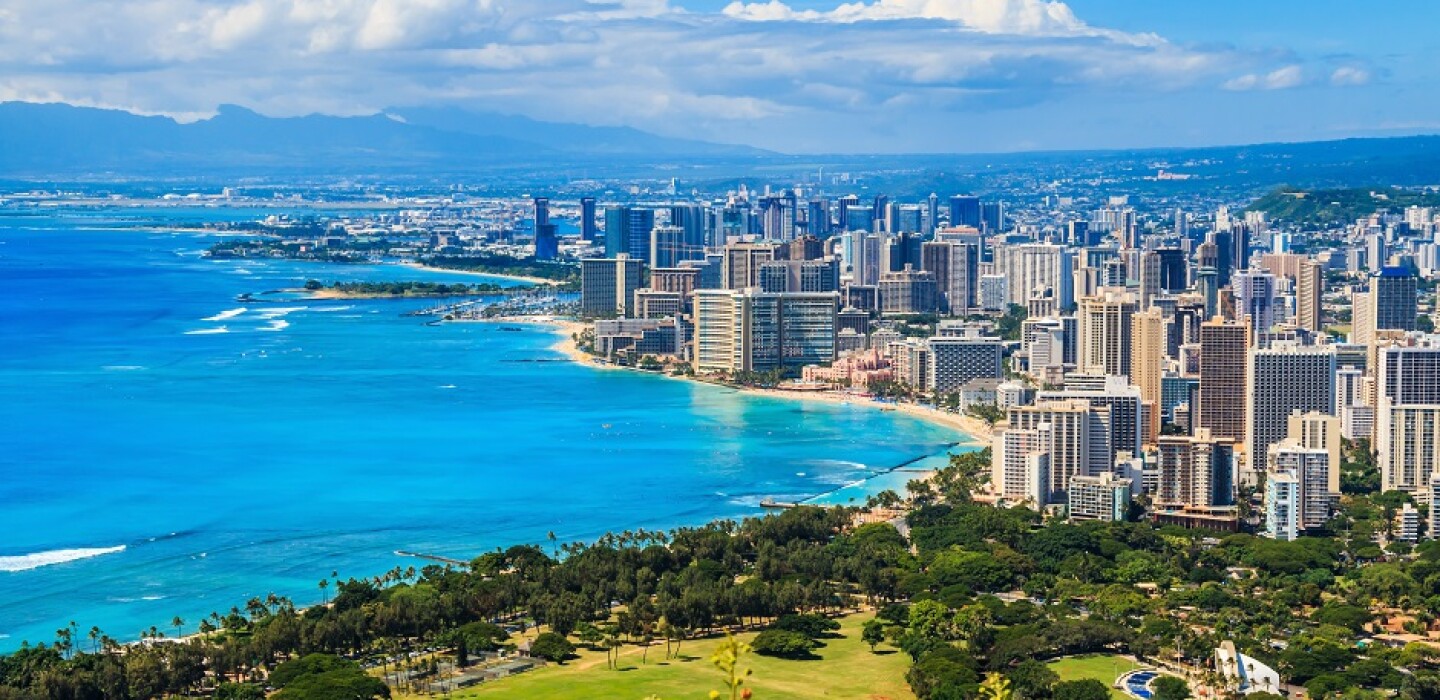
Hawaii Report Lists Strategies for Sea Level Rise Threat
(TNS) – A report released this week by a community working group lays out the growing catastrophe Oahu’s North Shore will face in the coming decades amid accelerated sea level rise, while providing a framework for policymakers to devise immediate and incremental strategies for adapting to environmental realities.
Already, about 28% of beachfront homes along the North Shore, comprising 2.5 miles, are within 20 feet or less of the shoreline, putting them at risk of being damaged by ocean waves and increased flooding, according to a report released this week by the North Shore Coastal Resilience Working Group, which includes more than 30 top scientists, environmentalists, attorneys, coastal engineers, lawmakers, government officials and homeowners. In the coming decades, with 2.4 feet of sea level rise, that figure is projected to rise to 40%.
Hawaii is expected to face 1 foot of sea level rise by 2050 and 3 to 4 feet of sea level rise by the end of the century, according a midrange scenario.
By the end of this century, or earlier, the North Shore will be plagued by chronic flooding or land loss from erosion on 1,083 acres of land, the equivalent of 820 football fields. Under current projections, 1,310 buildings will be affected, 2,192 residents displaced and about 3 miles of the coastal highway and 5.8 miles of city roads flooded.
The report warns that low-lying coastal areas will begin experiencing high-tide flooding in the mid-2030s, decades before sea level rise benchmarks are reached.
Hawaii’s sensitive coastal regions already have faced a deluge of threats. Homes, buildings and infrastructure have been built too close to the ocean; shorelines have been armored with seawalls that erode beaches; sand dunes destroyed; and sand removed from beaches for mining operations and shoreline armoring, according to the report.
Recently, the most visible effects of this legacy of poor land management has been seen along the stretch of beach between Rocky Point and Sunset Beach, which has become marred with massive sandbags, ugly black tarps, boulders, cement and crumbling debris—the result of homeowners, often illegally, trying to safeguard their private property. In February a house collapsed onto the beach.
The working group was established two years ago by the Surfrider Foundation, Hawai’i Sea Grant and SSFM International, a project management and engineering company, in response to the immediate threats facing the North Shore.
“We could no longer stand by as spectators and watch homes fall into the ocean along one of the most valued coastlines in the world,” said Elizabeth Benyshek, chair of the Surfrider O’ahu chapter, in a news release. “We had to step forward to take action.”
Critical of the reactionary approach that government has taken to properties threatened by erosion, the working group is recommending that Oahu’s North Shore serve as a pilot for a statewide managed retreat program that will provide a pathway for coastal property owners to voluntarily vacate their properties, returning the shoreline to public use.
“A majority of beaches on O’ahu are eroding, with the North Shore representing an epicenter of coastal erosion and impacts for the island,” warns the report, titled “Adaptive Coastal Management Recommendations, Actions and Strategies.” These impacts are playing out in highly visible shoreline erosion episodes that are threatening homes, public infrastructure, public beach access and Hawaiian cultural resources,” particularly, the report notes, in the areas of Mokuleia, Lani akea, Pupukea and Sunset Beach.
The report identifies critical concerns for the North Shore, including threats to homes and infrastructure due to erosion and sea level rise, dwindling public beach access, the environmental damage caused by materials placed on the shoreline to protect homes and lack of guidance for homeowners facing shoreline erosion.
The working group makes six recommendations for immediate action, including improving guidelines and limits for emergency sandbags and tarps, strengthening enforcement against unauthorized materials dumped on the shoreline, improving coordination between state and local government agencies tasked with coastal regulation, developing a beach and dune management plan, creating a comprehensive vulnerability assessment and adaptation strategy for the North Shore and expanding the work of the group to include community outreach.
The working group stops short of filling in specific strategies for managed retreat and what the triggers should be, noting that more work needs to be done.
“I think it’s a good start, ” said state Sen. Gil Riviere, who represents the North Shore and was part of the working group. “I think that the breadth of options that were welcomed and discussed is a good foundation to go forward. The trick is what do you do. The current system just doesn’t work.”
Lauren Blickley, Hawaii regional manager for the Surf rider Foundation, said Surfrider and other members of the group are planning to back three main bills this upcoming legislation session in response to some of the report’s findings.
One bill, which has been introduced in the past, would limit how long homeowners could maintain emergency sandbags and tarps on the beach to protect their properties, and eliminate the ability of beachfront property owners to obtain the permit if they are being threatened by chronic erosion.
“Something that is chronic is not an emergency, ” said Blickley.
Other proposals would create a single coastal management entity and advance managed shoreline retreat.
Blickley said that one of the accomplishments of the working group was bringing together a diverse group of people involved in coastal management issues, including beachfront homeowners.
“We were able to bring people from all of these areas of coastal zone management and have these really challenging discussions, ask questions and get answers and tease out gaps and also create a familiarity and realize that we are all trying to reach toward the same thing, ” said Blickley.
©2022 The Honolulu Star-Advertiser. Distributed by Tribune Content Agency, LLC.

Average Rating